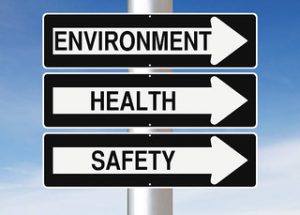 Since 2016, Livermore Lab has undergone a hazardous waste permitting process with the State of California’s Department of Toxic Substances (DTSC). The permit governs the storage, packaging and treatment of both hazardous wastes and “mixed” wastes (i.e., radioactive wastes mixed with one or more chemically hazardous constituents) at the Livermore Lab Main Site.
Since 2016, Livermore Lab has undergone a hazardous waste permitting process with the State of California’s Department of Toxic Substances (DTSC). The permit governs the storage, packaging and treatment of both hazardous wastes and “mixed” wastes (i.e., radioactive wastes mixed with one or more chemically hazardous constituents) at the Livermore Lab Main Site.
Under the California Environmental Quality Act (CEQA), DTSC is tasked with evaluating whether issuing the permit may have any significant impacts on the environment. In this case, the permit clearly has ramifications because it authorizes the Lab’s Main Site to store 913,270 gallons of hazardous waste. (This number does not include the amount of waste in the numerous 90-day waste accumulation areas around the site.)
Background: The DTSC previously issued a cursory and inadequate permit in March 2016, which Tri-Valley CAREs appealed on numerous grounds. Following a full briefing of the issues, the permit was stayed (stopped) in 2018 and remanded back to DTSC’s Permitting Division to correct deficiencies brought up in Tri-Valley CAREs’ appeal.
After a 3-year wait, a new Draft Revised Permit was issued in October 2021 for public review, public comment, and a (virtual) public meeting. Tri-Valley CAREs and other stakeholders submitted extensive comments again.
Click here for a link to all of the Public Comments submitted on the Draft Revised Permit.
The DTCS released the Final Revised Permit on September 30, 2022. As part of the final permit, the DTSC responded to all of the comments it received on the draft – for the DTSC responses Click here.
Outcome: There are numerous ways in which the new final permit was substantially improved due to the public comments received on (a) the first draft permit, (b) Tri-Valley CAREs appeal of the initial final permit, (c) the briefing on the appeal, and (d) the second round of public comments on the second draft permit. All of these steps led to the final Livermore Lab hazardous and mixed waste “treatment, storage and disposal” permit that DTSC released this month.
One significant improvement is stated in the following excerpt from the new final permit, “Since the 1997 assessment, the Facility has identified habitat and implemented protection measures, and the status of some of the protected and sensitive species found on site has changed (e.g., the California tiger salamander state status was elevated to threatened in 2004). For these reasons, DTSC will require the Facility provide an updated ecological assessment. The Final Revised Permit includes a new special condition and schedule of compliance for an updated evaluation of the potential for adverse effects from the DWTF miscellaneous treatment units emissions to ecological receptors within and surrounding the Facility.”
Another important addition to the final permit is a full and detailed schedule for the closure of the Lab’s former hazardous waste storage areas. The DTSC previously had only vague language in the permit regarding the steps and schedule for closure that also did not expressly outline the agency’s authority to inspect and approve the closure at various steps. The final permit is a vast improvement in its clarity regarding the closure of these contaminated areas.
There are many other important improvements in the final permit, and we urge interested stakeholders and parties to access the documents here.
Tri-Valley CAREs staff and members have invested significant time on this hazardous waste permit to ensure the workers, the public, and the environment are protected. The possibility of an accident involving hazardous waste at the Lab poses a significant risk, which is why we committed significant time and resources to the effort.
We are happy to be able to report that the difference between the original 2016 draft permit and the 2022 final permit is night and day, thanks in large part to our efforts. While there is always a risk from the Lab’s activities, strong and well-explained agency oversight from the DTSC and a thorough public process has significantly lessened that risk.
We appreciate all of our members who submitted comments and took the time to engage in the process. It is because of you that our mission for peace, justice and environmental sanity made a difference in this instance.
Now, on to one of our next opportunities to carry Tri-Valley CAREs’ mission forward – namely, the public process around the Livermore Lab’s Site-Wide Environmental Impact Statement. As of today (October 18, 2022) the Draft SWEIS is still pending. According to what the government wrote to us in two separate emails, we expect it any day now. Stay tuned!
— Blog written by Tri-Valley CAREs’ staff attorney, Scott Yundt.
Link to DTSC document portal for all of LLNL’s Hazardous Waste Permit documents: (CLICK HERE)
CLICK HERE for Tri-Valley CAREs’ Appeal to DTSC of the original, deficient permit
CLICK HERE for Tri-Valley CAREs’ Petition for Review of the original, deficient permit